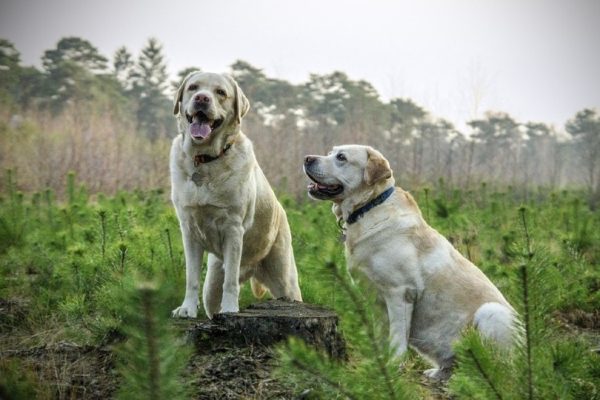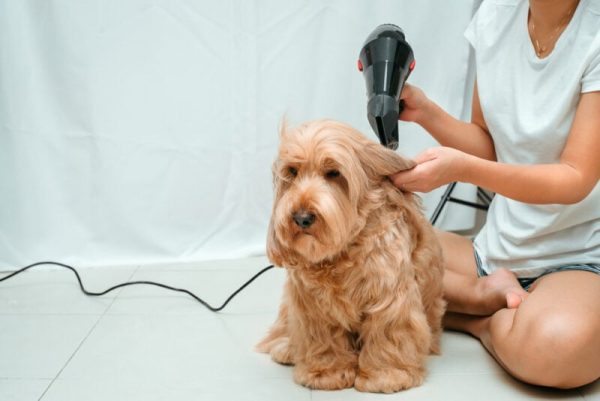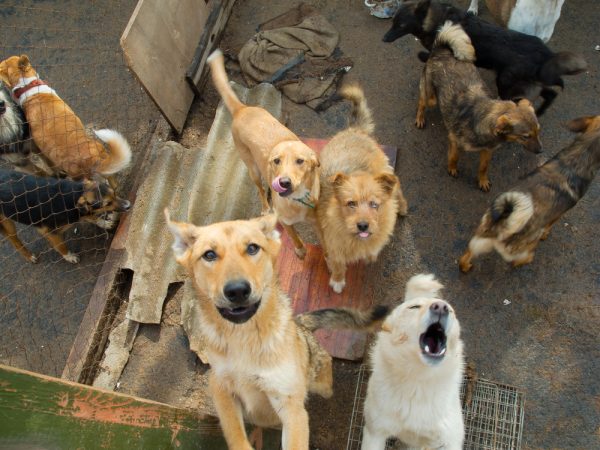Border Collies may be the most identifiable in their classic black and white coats, but there are more sides to this fascinating breed than you may realize. Although rare, Red Border Collies also delight their owners with their inimitable intelligence and personality, just in gorgeous shades ranging from shimmering red to a rich brown.
With the red color gaining popularity over the years, there’s no better time to start appreciating these majestic warm-toned herders. Let’s explore their history and a few intriguing facts surrounding this unique beauty.
Breed Overview
Height:
18–22 inches
Weight:
30–55 pounds
Lifespan:
12–15 years
Colors:
Red, brown, gold
Suitable for:
Active families
Temperament:
Loyal and loving, high-energy, intelligent, easy to train, standoffish around strangers
Red Border Collies, also called Foxy Collies, have the same genetics as the black and white varieties. The exception is their genes for melanin production. Instead of inheriting the dominant genes that result in the typical black fur color, these dogs receive two alleles of recessive pigmentation genes that color the dogs brown or red.
A Red Border Collie’s parents must be either Red Border Collies (with only red genotypes) or black Border Collies with one recessive allele for a red coat. Since the genes dictating the brown or red variations are recessive, it’s a much rarer color than black.
Red Border Collie Breed Characteristics

The Earliest Records of Red Border Collies in History
The red Border Collie—and all Border Collies, for that matter—have roots dating back hundreds of years in the border territory between England and Scotland. Although unnamed at the time, these working dogs were highly valuable across the region for their adaptability, intelligence, and herding ability.
Border Collies began making a name for themselves by impressing crowds at shows in the late 1800s; their sharp herding skills translated into a highly trainable and agile breed. Queen Victoria notably advanced the Border Collie’s profile, making several dogs her favorite pets. Breed clubs soon began appearing in the latter half of the century.
After the success of the first sheepdog trials, the International Sheep Dog Society emerged in 1906 to form a registry for breeding and host competitions. The goal was the advancement of the desirable qualities of the Border Collie as a working dog. Shirking conformational standards, judges assessed these collies on their “working dog” merits.

How the Red Border Collie Gained Popularity
The Red Border Collie is available through many breeders today. But for purists, color has never been a vital factor, so red is rare. It may occasionally appear in a litter to black and white parents, but those dedicated to the working and training qualities don’t single dogs out by color. Still, with their distinct coloration appearing in several patterns, Red Border Collies are continuing to build a following due to their attractive warm tones.
Formal Recognition of the Red Border Collie
The red coloration is one of several Border Collie colors that the American Kennel Club (AKC) accepts. It recognized the breed in 1995. Since then, Border Collies have been staples on rally and agility podiums.
The Border Collie’s kennel club acknowledgment isn’t necessarily a positive step for those in sheepdog societies, though. Many traditional organizations oppose conformational standards that organizations like the AKC follow, feeling that it works against the herding ability they have promoted for over a century.

Top 3 Unique Facts About the Red Border Collie
1. Border Collies Can Be Red for Many Reasons
Several genes come together to define a Red Border Collie’s coat color. They’re associated with features like white markings, color dilution, pigmentation, and patterns, resulting in everything from solid-colored Collies to multi-hued merles.
Genes that can bring out a red coloration in a Border Collie’s coat include TYRP1 and MC1R. Tyrosinase-related protein 1, or TYRP1, broadly determines the dog’s color by affecting eumelanin production, making the hair either the dominant black or recessive brown. While two brown Border Collies will produce an all-brown litter, black Border Collies may yield a brown puppy if both parents possess and donate a recessive gene.
The MC1R gene is commonly associated with the red coloration in Border Collies, giving dogs designations like “ee red” or “Australian red.” The “ee” refers to the MC1R recessive trait that causes phaeomelanin production instead of eumelanin. Due to the dominant eumelanin gene, dogs with “EE” or “Ee” genotypes have black or brown coloration. Border Collies with the “ee” genotype can have coats in varying colors, including red, gold, and liver.
2. Red Border Collies May Secretly Be Merle
The mutation that causes the merle coloration requires dogs to produce eumelanin in patches around white, tan, and lighter hair. But since the “ee” genotype doesn’t produce eumelanin, the variegated colors can’t appear as normal. The pattern will instead look like a typical non-merle.
As a result, breeders and buyers must take extra steps in vetting Red Border Collies. DNA testing is crucial to ensure they don’t mistake a merle for a red and accidentally breed two merle dogs. Double-merle genes put the dog at a significantly higher risk of blindness and deafness, making their breeding an ethical concern.
3. Red Border Collies Can Appear in Various Patterns
Like the typical black-colored varieties, Red Border Collies can appear in numerous shades and patterns. Their brown hair can show in the classic two-tone arrangement alongside white coloration or be part of a patchy merle coat. In rare instances, you can find a single-tone Collie with vibrant red hair coloring their entire body.

Does a Red Border Collie Make a Good Pet?
A Red Border Collie is no less intelligent, active, or full of life than Border Collies of any other color. They can make excellent family pets, though they don’t always mesh with small children running around the house. Border Collies maintain a herding tendency that can cause them to nip at children or other pets as they try to get them to fall in line, a habit that often demands training.
Border Collies can be a joy for an experienced owner with an active lifestyle. They need at least 2 hours of daily exercise and plenty of mental stimulation to avoid becoming bored and destructive. If you can give them the patience, care, and physical engagement they demand, you’ll discover that a Border Collie is one of the most affectionate and eagerly trainable dogs you can imagine.

Final Thoughts
Red Border Collies are a fascinating offshoot of an already remarkable breed. But with these dogs in particular, color is often the lowest concern for many. Although the red variety is unique and sometimes unexpected, Border Collies of any pattern and tone can make exceptional companions for the right owners.
Featured Image Credit: Julia Suhareva, Shutterstock
